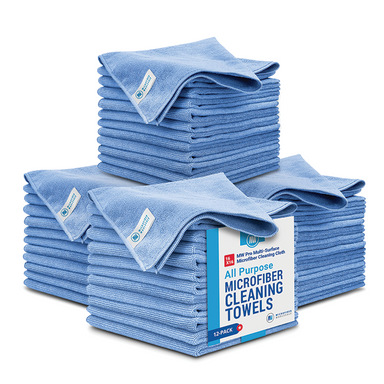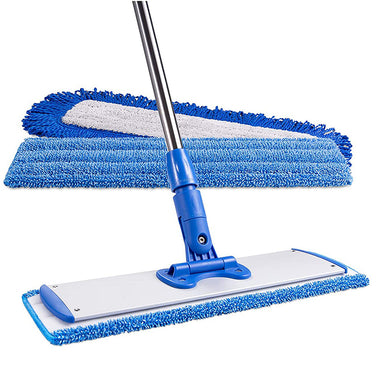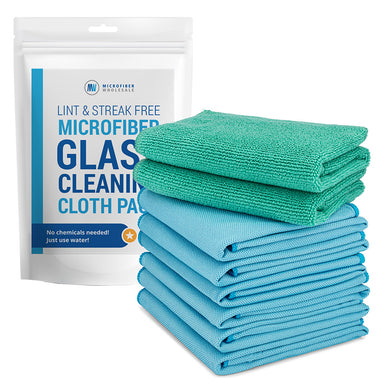3. Relying on Ineffective Tools
Newspaper, paper towels, and old rags are still surprisingly common in some cleaning crews, often passed down as “traditional” methods. The problem? They’re streak and lint machines.
Paper towels break down as you wipe, leaving fibers behind, while newspapers can transfer ink and don’t have the same softness or absorbency they once did. Old rags, especially those made from mixed fabrics, tend to smear soils around instead of lifting them, making glass look dull or hazy under the light.
For professionals, these outdated tools don’t just slow you down, they hurt your results and can cost you repeat business. The fastest way to upgrade your finish is to upgrade your toolkit: use plush microfiber for the cleaning phase to lift and trap dirt, then switch to flat-weave microfiber for polishing, which leaves glass spotless, lint-free, and gleaming. Keeping a dedicated glass cleaning kit ensures these cloths are always clean, dry, and ready for flawless results.
Your best bet:
- Plush microfiber for cleaning.
- Flat-weave microfiber for polishing (no lint, no residue).
- A dedicated glass cleaning kit keeps these separated and ready.

















